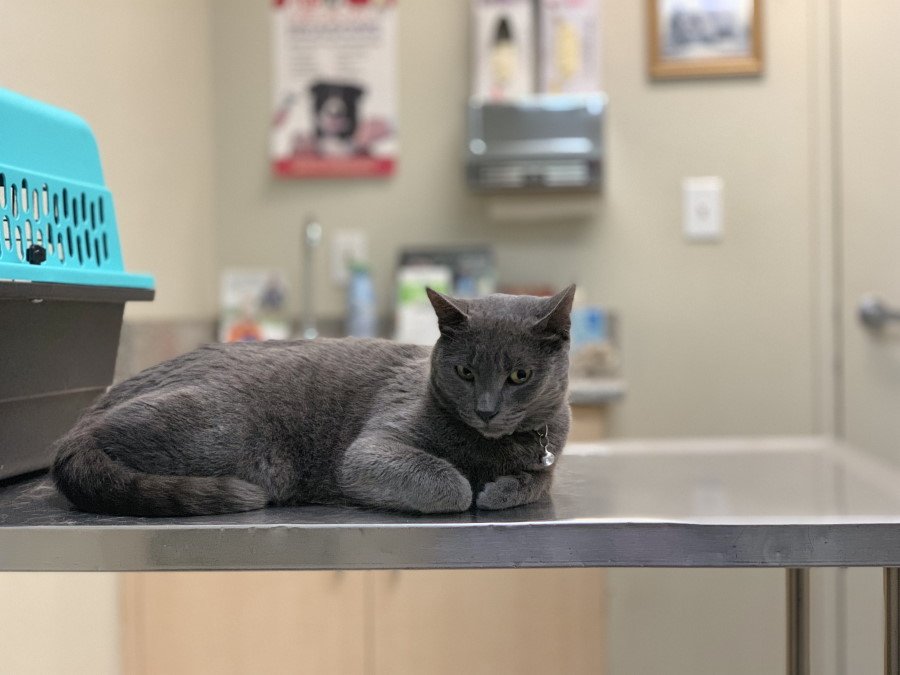Cats are not self-sustaining animals that will never require any first aid. They can be hurt just like any of us around the house from falling objects, other animals, or even by allergies and insects. First-aid needs in cats can be caused by a host of issues that might include a myriad of simple support to emergency medical intervention. Here is a list of the most basic first aid items to look for and how to best assist your fur baby should this be required.
Table of Contents
Your Cat is Bleeding. What Do You Do?
Bleeding of any kind in a cat should invoke a swift call to action. First, access how severe the injury is and ensure that you first and foremost try to soothe the feline, as additional movement can aggravate the injury. If superficial, clean, bandage (if able and needed), and then monitor.
If severe, wrap tight and use pressure points to apply enough to stop the bleeding and get them to a vet or pet hospital. . Additionally, try to keep even unconscious pets warm to avoid shock. Like humans, severe bleeding can cause additional life-threatening concerns with your feline, so act swiftly to address this concern
Breathing Difficulties
This emergency can have a host of causes and different methods of addressing. Allergies can cause stuffiness and congestion in animals. If your cat has a known allergy, this should have a course of treatment and reaction in place from your veterinarian.
If this is a new allergy, it may present the first time like any other breathing concern. First, you will want to ensure that your cat is getting enough oxygen which can mean: (1) remove the collar, (2) check airways to ensure they are clear; (3) check nose and throat for mucus or other objects; (4) perform CPR if to this level; (5) position unconscious feline’s with body slightly higher than the head; (6) transport to the veterinarian immediately.
Cat Eye Injuries
Considering how low to the grown cats are, this is a common injury. Twigs, grass, and other foreign objects getting in your fur baby’s eyes and causing irritation or injury is common. Luckily if caught quickly, simply taking a warm cloth and cleaning the eye can prevent any further treatment needed.
Saline solution-only mixtures can be used to wash the eye out of the irritant also. If the cat does continue to scratch or paw at the irritated eye, it might be needed to have them seen to ensure they do not further infect or a more serious concern does not exist.
Burns
Burns can be another major injury concern for cats. They like to scale walls, shelves, and the like putting them in danger of scalding or even chemical burns. If a caustic or chemical causes the burns, rinse with cold water and immediately contact your veterinarian for the next steps.
If it’s a hot water scald depending on severity, cover with cool, damp cloths until your feline is comfortable, or if bad, they can be transported to a medical facility for evaluation. If exposed to fire, it is also critical that they be offered water immediately to help ease any internal smoke concerns that might occur.
Did Your Cat Get Hit By a Car?
With pets, this is a special first aid situation that must be considered. When your pet dashes into the road and suddenly finds themselves in such an emergency as being struck by a vehicle, your first instinct is to run into the fray and get them.
The first emergency protocol is to stay calm. If you are upset, it can also cause you to take action to cause injury to yourself. Look for traffic to ensure no danger before calmly approaching your feline. Remember, injured and stressed animals may lash out and cause you and them more injury or stress. Minimize their movements, and if they are lying down, get a board or something stiff to place them upon for transporting away from the road.
Cover them as best as possible to stave off the shock, and apply light pressure to any bleeding situation to try and staunch. Get a friend or family member to drive you and the fur baby to the medical facility closest to you.
As the first line of defense, stocking your home with a prefilled or a self-assembled first aid kit is a great pre-emptive move to prepare for feline emergencies. Next, try to look at your house from the vantage point of your cat and eliminate as many concerns as possible in the way of plants that could harm other animals and topsy-turvy items that could topple.
When your feline is outdoors, know where they are, and when they return, ensure you do a quick visual scan for injuries, allergies, or other signs of something gone awry. With due diligence and quick action, feline emergencies can be addressed, remedied, and have Fluffy back on the path to a healthy recovery in no time.

Jonathon Hyjek is an entrepreneur and cat-lover. He is married to Joy and they share their home with their 2 feline-friends, Franklin & Ollie. Jonathon is a self-admitted “Crazy Cat Guy”. He started this website because of his love for his own cats and their well-being.

